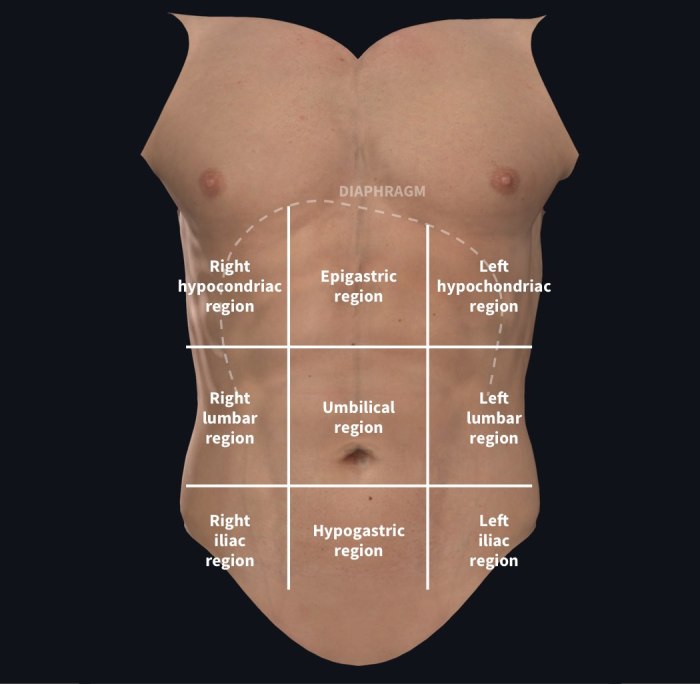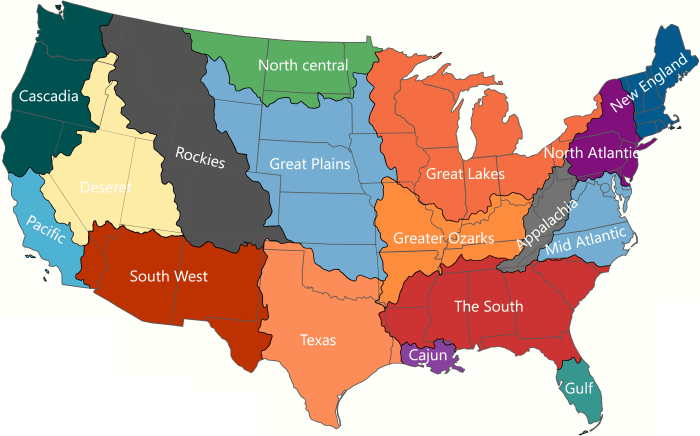The idea that regions are fluid means that __________. – The idea that regions are fluid means that regional boundaries are not fixed but rather shift and change over time. This fluidity has profound implications for cultural identity, political governance, economic dynamics, and social structures.
As regional boundaries evolve, so too do the cultural practices, traditions, and identities associated with them. This can lead to both challenges and opportunities, as individuals and communities navigate the changing landscape of their surroundings.
Cultural Implications

The fluidity of regional boundaries significantly impacts cultural identity and heritage. As regions shift and evolve, cultural practices and traditions undergo transformations, influenced by the merging and blending of different cultural elements.
For instance, in border regions where multiple cultures coexist, cultural practices often blend, creating unique hybrid forms. This cultural exchange leads to the emergence of new traditions and the revitalization of existing ones.
Furthermore, fluid regional boundaries challenge traditional notions of cultural heritage and ownership. As regions merge or divide, the cultural artifacts and traditions associated with those regions may become contested or shared, leading to complex negotiations and redefinitions of cultural identity.
Political and Economic Consequences
Fluid regional boundaries have profound political implications, including territorial disputes and governance challenges. Shifting borders can lead to conflicts between neighboring states, as they negotiate and redefine their boundaries.
In terms of governance, fluid regional boundaries can create challenges for local and national governments. As populations move across borders, governments must adapt their policies and services to meet the needs of a diverse and mobile population.
Economically, changing regional dynamics can impact trade patterns and resource allocation. Fluid boundaries can facilitate the flow of goods and services, but they can also create barriers and disrupt existing economic networks.
Social and Demographic Changes

Fluid regional boundaries significantly affect population distribution and migration patterns. People may relocate to new regions for economic opportunities, political stability, or environmental factors.
Changing regional identities and communities have social implications. As people from different backgrounds come together, they may face challenges in integrating and forming cohesive societies.
However, fluid regional boundaries can also provide opportunities for social innovation and the creation of new communities that transcend traditional boundaries.
Historical Perspectives: The Idea That Regions Are Fluid Means That __________.
Throughout history, regional boundaries have been constantly changing, driven by factors such as war, conquest, trade, and migration.
A historical timeline can illustrate how regional boundaries have shifted over time, providing insights into the dynamics and patterns that have shaped these changes.
By studying past experiences with fluid regional boundaries, we can gain valuable lessons and perspectives that can inform our understanding of current and future regional dynamics.
Environmental Impacts

Fluid regional boundaries can impact environmental conservation and resource management. Shifting borders can disrupt ecosystems and affect the distribution of biodiversity.
For example, changes in regional boundaries can lead to the fragmentation of habitats, disrupt migration patterns, and alter the availability of resources for wildlife.
However, fluid regional boundaries can also provide opportunities for regional cooperation in addressing environmental challenges. By working together, neighboring regions can develop joint conservation strategies and manage transboundary resources effectively.
Future Implications

The continued fluidity of regional boundaries is likely to shape future global dynamics. We can design hypothetical scenarios to explore the potential consequences of fluid regional boundaries in the future.
By identifying the challenges and opportunities that may arise, we can develop strategies and policies to manage future regional dynamics effectively.
Understanding the implications of fluid regional boundaries is crucial for navigating the complexities of an increasingly interconnected and globalized world.
FAQ Summary
What are the main factors that drive regional fluidity?
There are many factors that can contribute to regional fluidity, including political, economic, social, and environmental changes. For example, shifts in trade patterns or resource availability can lead to changes in regional boundaries, as can population movements or the rise and fall of empires.
What are some of the challenges associated with fluid regional boundaries?
Fluid regional boundaries can present challenges for governance, as it can be difficult to establish clear and stable political and administrative structures. Additionally, fluid boundaries can lead to conflict and instability, as different groups compete for control over territory and resources.
What are some of the opportunities associated with fluid regional boundaries?
Fluid regional boundaries can also present opportunities for cooperation and innovation. For example, fluid boundaries can allow for the free flow of goods and services, and can facilitate the exchange of ideas and cultures.